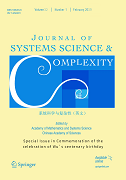LI Ting,SUN Yao,HUANG Zhenyu,WANG Dingkang,LIN Dongdai
The GVWalgorithm is an efficient signature-based algorithm for computing Gr¨obner bases. In this paper, the authors consider the implementation of the GVW algorithm by using linear algebra, and speed up GVW via a substituting method. As it is well known that, most of the computing time of a Gr¨obner basis is spent on reductions of polynomials. Thus, linear algebraic techniques, such as matrix operations, have been used extensively to speed up the implementations. Particularly, one-direction (also called signature-safe) reduction is used in signature-based algorithms, because polynomials (or rows in matrices) with larger signatures can only be reduced by polynomials (rows) with smaller signatures. The authors propose a new method to construct sparser matrices for signature-based algorithms via a substituting method. Specifically, instead of only storing the original polynomials in GVW, the authors also record many equivalent but sparser polynomials at the same time. In matrix construction, denser polynomials are substituted by sparser equivalent ones. As the matrices get sparser, they can be eliminated more efficiently. Two specifical algorithms, Block-GVW and LMGVW, are presented, and their combination is the Sub-GVW algorithm. The correctness of the new proposed method is proved, and the experimental results demonstrate the efficiency of this new method.
